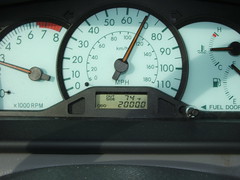Now, if you’re a regular reader of my blog then you already know I’m going to say, “It depends.” But for about 90% of the people asking that question, the answer’s going to be, “No.” If you have to wear a suit and tie to work, or ladies, if you have to wear hose with your dress – that doesn’t count as a deductible work clothing expense. A lot of offices have dress codes, but adhering to a dress code does not qualify those clothes for a business deduction.
Okay then, so what does? A uniform, like for a police officer or a mail carrier. Clothing that’s not a necessarily a uniform but is required for the job – for example, a chef jacket or doctor’s scrubs. Or logo clothing that could also be considered a work uniform – like the shirt’s they wear at McDonald’s or the cleaning company that takes care of my office building.
What about Macy’s, where all the employees have to wear black? That’s a good example because wearing black at Macy’s is a requirement and I’ve heard Macy’s workers refer to that as their “uniform,” but unfortunately, that doesn’t meet the IRS test of a uniform. Although everyone has to wear black, there is no “standard” Macy’s uniform and the clothing has no Macy’s logo, so in a situation like that, there would be no tax deduction.
So let’s go back to the McDonald’s example again. Let’s say you have to wear the uniform shirt, but you can wear any pants you want to as long as they’re black, can you deduct the pants? No, because you can wear any pants as long as they’re black. If McDonald’s has special pants with a Mickey D’s logo on it, or something special to go with their uniform shirts, then that would be a deductible expense, but plain black pants are not.
Any kind of safety clothing would count as deductible: safety goggles, reflective vests, work gloves, and steel toe boots all come to mind there. If you’re in a job that requires protective gear, I count the gear as a deductible business expense.
If you’re self-employed, these expenses go right onto your Schedule C and it’s a direct offset against your income. If you’re working for someone else, then your clothing expenses would go on your form 2106 – Employee Business Expenses. They’re subject to the 2% limitation rule (meaning you have to spend more than 2% of your total income on work stuff before you qualify for a deduction).
Remember, if your clothing does qualify as deductible, then cleaning it is also deductible. I actually sat and worked this out with some med students that I was doing taxes for: scrubs only – one load a week. Scrubs and lab coats: two loads. For one load a week, take a $250 deduction; two loads, double it. If you have to dry clean your uniforms, save those receipts because that really adds up. Since most people do their laundry at home (and the laundromat doesn’t give out receipts), you do not need receipts for doing your laundry. Of course, cleaning of a regular business suit or laundering of regular business shirts does not count as a deductible expense.



